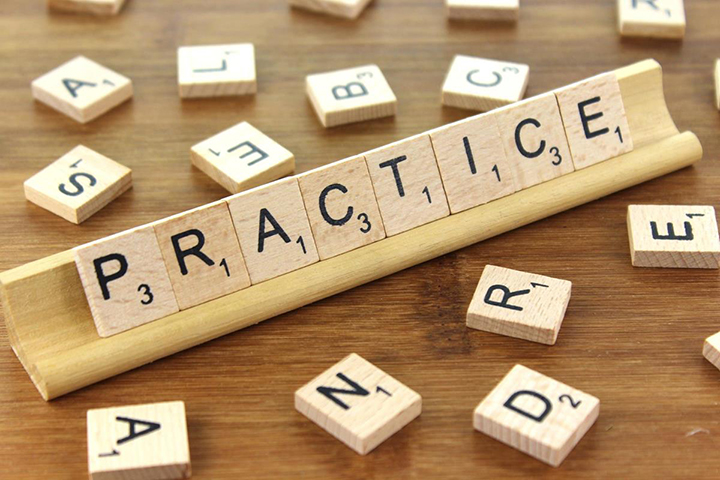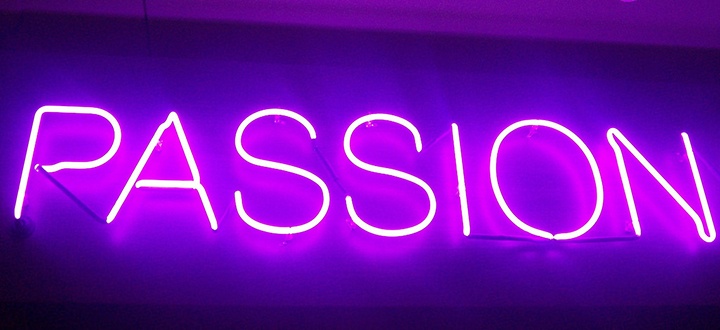Just as you take the stage to give your presentation, do you want the earth to open up and swallow you whole?Does your heart beat faster than that of a racehorse? Feel your stomach tying itself into knots?
For most of us, public speaking is a nerve-wracking affair, and there’s nothing we’d like more than to back off, run away and never, ever, get back up there.
You too, eh?
Well, for starters, you’re not alone!
Statistically, as many as 3/4ths of everyone that you meet is likely to be stricken with glossophobia!

Popular legend has it that the average person ranks the fear of public speaking higher than the fear of death.
Unfortunately, a deep-rooted fear of public speaking dents your credibility, both personally and professionally.
In business, it’s vital for you to be proficient enough to get your point across–crisply. And, so, in a business presentation, your presentations skills are just as important as the information you are showcasing.
Your success in selling yourself, your product and your services depends on your ability to stand up and be heard.
And while we’ll agree that captivating an audience is a skill you start honing at a very early stage, there are several ways to get over your fear of public speaking.
Stay tuned…
1. Research your audience thoroughly
We’re all guilty of waiting for a presentation to end because the orator has gone ridiculously off-topic and hasn’t been able to address any of your needs.
If the presentation is worlds away from what you thought it’d be like, then it’s a lost cause. Don’t be that guy.
So, it’s important that you value your audience’s time and make it more about them than about you, i.e. you need to make sure that you have a high you-to-me ratio.
Be curious about their backgrounds and the amount of topical knowledge that they bring to a presentation because that will help you structure your presentation as well as prepare for it. At any point in time, you should always be more knowledgeable than your audience.

2. Organize your thoughts and ideas
Once you know what your audience is looking for, organize your thoughts and ideas around that. When you prepare an outline of what you want to cover and organize your ideas, materials, and opinions around it, you will be significantly more relaxed than you would otherwise be because you won’t have to worry about forgetting something important.

Channelling your insights on the subject and having a clear idea of the presentation will reduce your anxiety and boost your confidence.
Start your presentation planning in ‘analog mode.’ Rather than diving right into their presentation software of choice, the best public speakers often flesh out their theme and objectives beforehand. Personally, I’ve always noticed that the analog approach acts as a force-multiplier to stimulate my creativity.
Also, as you form a broad outline and structure, you’ll be able to cull ideas for visuals such as charts or photos that you can add in later.
Remember that while you might use cutting-edge technology when you deliver your presentation, the art of connecting with an audience is still very much analog in nature.
3. Practice, Practice, Practice…
It’s true; you will make mistakes. But practising your speech will definitely bring you up the curve.
Practice doesn’t make perfect. Practice reduces the imperfection

Do whatever works for you (talk to a mirror, talk to a wall, or ask a trusted friend to listen), but make sure it includes practising out loud so that you can get a sense of flow and timing, and commit material to long-term memory.
The only way to learn to speak is to speak and speak, and speak and speak, and speak and speak and speak.

Psychologically, if you’re a subject-matter expert, there’s a tendency to cut yourself some slack when practising a speech resulting in a presentation that’s not as sharp as it could have been. Don’t.
So, hope for the best but always practice as if you’re the worst.
4. Visualize victory
Top performers know the significance of picturing themselves succeeding in their minds before it translated to reality. When harnessed and used correctly, it can be extremely effective.
It’s common knowledge that visualization is a highly effective technique that peak sports performers use regularly and openly credit as a key part of their overall success.

Studies have shown that goal achievement via visualization works because your subconscious mind does not like the dissonance that exists between your current situation and what you’re visualizing.
Essentially, the subconscious decides that to resolve that conflict by moving toward your visualized state.
The key to effective visualization is to create the most detailed, clear and vivid a picture to focus on as possible. The more vivid the visualization, the more likely, and quickly, you are to begin attracting the things that help you achieve what you want to get done.
5. Get your body in shape
The next time you have to take the stage, take a deep breath. Or five.
One of the easiest things you can do to deal with stage fright is to improve the quality of your breathing. While anxiety, stress and other last-minute setbacks will always be there, the good news is, so will your breath.
When you’re nervous, you typically take several rapid and shallow breaths.
Fear is excitement without the breath.

Breathing calmly and in a measured fashion before you take the stage will relax your body and mind, help you get into a rhythm, and add power and strength to your voice.
Also, once you start to speak, remember to pause and breathe after you make a point. The only clock you should be on is getting to 100% effectiveness.
Another way to hack stage fright is by changing your body language in entirety.
In her TED video, Amy Cuddy, a professor at Harvard Business School, posits that “power posing”—standing in a posture of confidence, even when we don’t feel confident—for as little as two minutes impacts the levels of testosterone and cortisol in our bodies.

Power posing has a positive effect on testosterone, the hormone linked to power in both animals and humans, and reduces our level of cortisol, the stress hormone.
The point of body-shaping, in a manner of speaking, is to relax since letting go helps you de-stress and makes you more at ease and confident.
6. Pick a Subject That You Really Care About
My mother used to tell me that unless I absolutely loved something, I shouldn’t bother spending any time doing it. Made sense then, even more so now.
I think one of the reasons that people don’t fare that well on-stage is that they don’t care too deeply about what they’re talking about. I mean, they’re invested in the presentation to the extent of their incentive to take the stage but not much further.
I have a few ideas on how to pick a topic that you really care about:
- The topic should have had an inordinate impact on you
- You want to share it with others
- You really, really feel others could benefit from your knowledge
- You can talk about it from the heart
When you speak about something that you genuinely care about, you’re likely to be more comfortable in your skin and feel more confident in your element. And that’s the only situation in which you should go onstage.

Surviving a major public speaking engagement is made possible, at least in part, by speakers caring deeply about their subject matter. You need a certain degree of audacity and blind belief (even if you can’t will things into existence), but you also need passion and genuine interest in the topic of choice.
If you don’t care about what you’re talking about, how can you do it? How can you get your audience excited?
7. Use effective visual aids
Not everyone is an auditory learner who can glean information from lectures and speeches. Most people are visual learners who respond better to still or moving images.
Remember, visual aids can be profoundly impactful when used as an enhancement to your presentation. They engage the audience by providing additional information and reinforcing your key takeaways. They also help you reach your objectives faster by bolstering your message, clarifying your points and adding a layer of visual delight to information.
Years ago, we only had equipment like overhead projectors and printed posters to support one’s speech visually. However, with the evolution of multimedia and modern-day presentation tools, integrating animation and high-res images in public speaking have become relatively commonplace.
8. Kill your fear of rejectionctive visual aids
I spent all of college thinking I didn’t belong there. Muchos stupid.
For early humans, being ejected from the safety of a tribe/group could have meant death. A million years later, most of us still try very hard to ‘fit in.’

A common fear faced by public speakers is that of rejection. Now, this would be a valid fear but for one salient detail: the presence of your audience invalidates your fear.
A confident public speaker realizes that rejection is simply a part of the risk of getting up on-stage and that, to grow professionally, we all have to take the occasional risk and step outside of our comfort zone.
To get over the fear of rejection, you need to start asking yourself what your life would be like if you didn’t care about whether everybody liked your speech or not. Don’t let your feelings of self-worth be governed by whether or not your speech is accepted or rejected by your audience.
Ask yourself:
- What do I want?
- Why is this important to me?
- How will I benefit?
- What will I miss out on if I don’t overcome my fears?
If you never put yourself in a position where your audience can reject you, then you also deny yourself the opportunity of being in a situation where an audience can accept you.
9. Unlock your emotions
Emotions are one of the most visceral forms of messaging..
Your ability to create a meaningful connection with your audience is a direct function of your ability to tap into your emotions.

If you’re ecstatic about the presentation, your body language should shout that out. But if the topic of the speech makes you sad, say so. If you felt remorse while preparing for the presentation, make that clear too.
Humour is a great way to connect with your audience, and some of the most successful speakers tell self-deprecating stories. It literally improves the brain chemistry of everyone in the room.
That said, practice your jokes before the actual moment so that your bestie isn’t the only one laughing his head off. It’s safe to say that I think of on-stage humour like I do Scientology: works for some, not so much for others.

When you share your feelings in an unfettered way, you create a rich and lasting connection with your audience. If you put on a front, your audience will see right through it.
Speaking is not acting.
The point is to be your natural self and not stifle your emotions. You should absolutely research other speaker styles, but develop a style distinct to your personality.
You should treat every presentation as a series of intimate person-to-person conversations and just be you.
In Summary
Fear is only as deep as the mind allows.
Replace time expended on worrying by time spent on preparing thoroughly for your presentation, by knowing your material cold, and preparing for your time on stage beyond the point of pain. OK, that might be a bit over the top, but you know what I mean!
It really is as simple as crafting a compelling story and then going out there and telling it. 🙂
